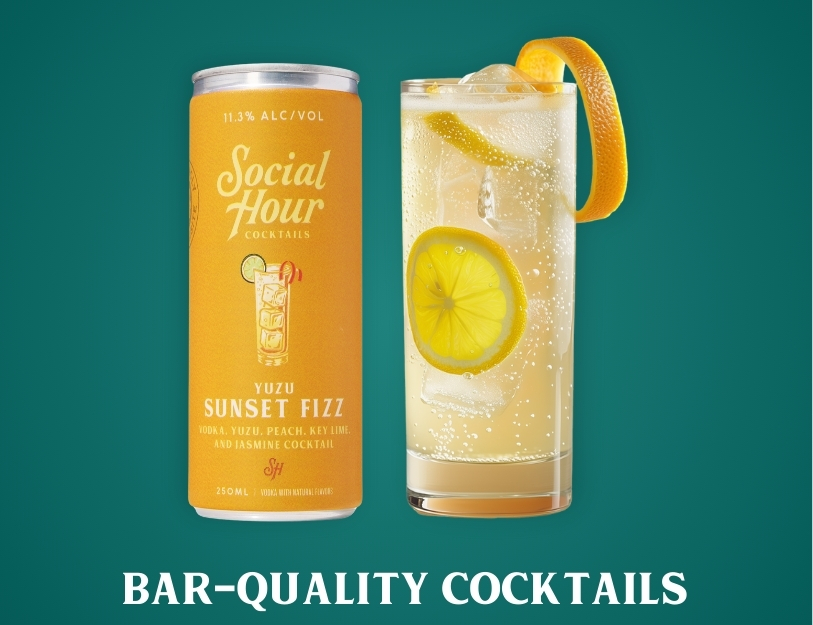
Behind The Counter: Vanessa Cominsky
TheListAreYouOnIt.com is thrilled to have Vanessa Cominsky share her incredible wine and spirit intel for this issue’s Behind the Counter. Vanessavmoved to Washington, DC in 2017, taking the Sommelier position at DBGB Kitchen and Bar, working with a primarily French and American wine list. She then moved to St. Anselm in 2018, where she managed the beverage program, focusing on vintage Madeira and wines from all over the world. She was able to stay busy during the pandemic, making 12,000 individual meals a day with World Central Kitchen at Nationals Park, while the restaurant industry in DC was shuttered. As the pandemic wound down, Vanessa worked as a Sommelier and Beverage Director at Michael Rafidi's Michelin starred Levantine restaurant, Albi. More recently, Vanessa shifted to distribution and is now working with Prestige-Ledroit as a Wine and Spirits Specialist. Vanessa is also a co-founder of Vin. Vitalité. A Community of Women in Wine which was founded to foster networking, build relationships, and create scholarship opportunities for women in the DC wine industry. Who better to sit and discuss terroir than Vanessa?! Her knowledge of wine and spirits is vast and her passion comes through in every word:
Terroir is defined as a sense of place – it’s a French term and idea that’s commonly used to describe and defend the Designation of Origin system in Europe. It stems from the idea that agricultural products are inherently unique from specific places because of that location itself; the climate, the weather, the direction of planting, the water, the elevation, the naturally occurring microorganisms…the list goes on. While we use it liberally in discussion with wine, it can be applied to anything, from Pecorino Romano cheese in Italy, to Mezcal in Oaxaca. While the commercial beverage industry has led us to believe that every bottle of any product should be the same, this is not necessarily the way these agricultural products are meant to be. Wine especially should have some variation vintage to vintage and should evolve as it ages. Terroir is what creates that variation, which can stem from the overall climactic conditions and the changes in weather year to year, as well as changes or choices in fermentation. These products are not static and are expected to have variety. Many beverage professionals are looking for unique expressions with a story to tell as to WHY they taste that way, and a big part of that answer is due to terroir.
Talking about terroir in wine is easy – it’s the original industry that used that term. But it has really become a bigger part of the conversation in spirits in recent years with a push for smaller, craft, and traditionally produced distillates coming to the forefront of the market. Rum is a really great example of this, with different places having distinctly different styles produced from their location. The appellation for Rhum Agricole on the island of Martinique (which is a territory of France) was an important acknowledgment of this style in 1996 as being distinctly different from other sugarcane-based spirits in the Caribbean.
Another important category in the spirits industry that showcases a sense of place is Mezcal. In my personal journey to learn more about spirits, I’ve genuinely found that the unique expression of terroir in this category is one of the most eye opening. Like many, my first introduction to this spirit was in the late 2010’s and it was pitched to me as “smoky tequila” – knowing what I know now, I can say that this is a gross misrepresentation of Mezcal as a category. How Mezcal has been portrayed and commercialized into this box doesn’t do it justice. It’s not all Espadin, it’s not all smoky, and it’s just as amazing an adventure as some bottles of wine I’ve had. With many Mezcaleros outside of the bigger producers working with wild agave, there’s a lot of variation from batch to batch from the same producer. They may have a bigger harvest one season and have a longer run, which would adjust their distillation schedule. A drier year might make fermentation difficult and slower – which could result in malolactic fermentation, which would change the overall texture of the finished distillate. A thousand small decisions can make each batch unique – even if it’s using the same agave from the same producer. I would challenge anyone who enjoys wine and appreciates the differences in each bottle to explore Mezcal outside of Espadin from individual Mezcaleros to find the beauty in being one of a kind.
One of my favorites from our portfolio are the Cinco Sentidos Arroqueño from "Tio" Pedro Hernandez Arellanes in Santa Catarina Minas. This mezcal is fermented in pine vats and distilled in clay pots. Tio runs pretty small batches, even though he can roast up to three tons of agave in his underground oven. Arroqueño as a variety is very large and is a great introduction to non-Espadin, as it has a lot of similarities in flavor. Tio's Arroqueño is bold and tends toward round, rich flavors, from citrus to vegetal. Any smoky flavor here is subtle, and is overshadowed by a bit of rock candy sweetness on the finish.
You can follow her on instagram @vminsky


